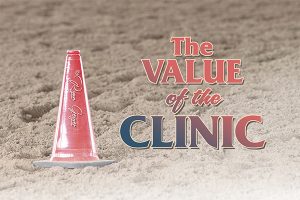The Value Of The Clinic
Click here to read the complete article
180 – November/December, 2024
Decades ago, horsemen didn’t have access to the same learning opportunities we have available today. More often than not, wisdom was passed down through generations via word of mouth. Or horsemen discovered what worked and what didn’t through experiential learning, aka “trial and error”.
These days, we have the clinic.
Alex Ross, AQHA Professional Horseman and former AQHA Senior Director of Judges, remembers his first “clinic” experience. He was 16 years old, sitting in the stands at the Quarter Horse Congress, listening to Harold Hudspeth explain the best method for saddling and bridling a horse.
“To this day, I still use things I learned from his clinic: how to be efficient when you saddle and bridle your horse and the steps you go through,” Ross says. “I’ve learned from so many people over the years. Back in the day, we had to learn a lot by trial and error, but now clinics are a lot more available.”
Ross admits that this early experience was more like a demonstration than a clinic, because a clinic implies participation.
“During a demonstration, you only have a couple of hours,” Ross says. “There’s no way you can go through and touch on everything it has taken you 40 years to learn. You try to show a finished project and give people a goal to work towards.”
While both methods of distributing knowledge are valuable, a clinic allows participants to become part of the action and try out techniques with their own horses. With the clinic, we move from demonstration to hands-on instruction.
The Value of the Clinic
Click here to read the complete article
180 – November/December, 2024











